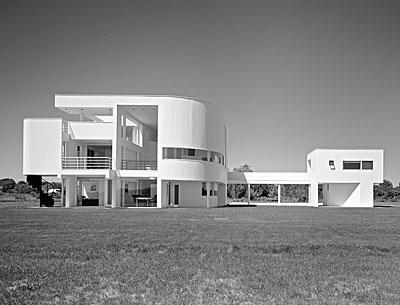A Talk on Long Island’s Modern Architecture

Caroline Rob Zaleski will speak at the Amagansett Library on Saturday at 6 p.m. about her book “Long Island Modernism: 1930-1980.” Released by W.W. Norton on Monday, the book has been described as the “first illustrated history of Long Island’s modern architecture.”
Based on a survey by the Society for the Preservation of Long Island Antiquities, the 336-page coffee-table book has essays on 25 architects and a comprehensive list of others, architects as well as designers, who have worked on the Island. It has 300 archival photographs, mainly in black and white.
Ms. Zaleski has spent summers in unwinterized houses on Napeague or along Gardiner’s Bay for the last 35 years. It was on Napeague that she “wrote much of the book in a writer’s shed,” she said recently. Ms. Zaleski received a master’s degree in architectural preservation from Columbia University. She has been the chairwoman of the Preservation League of New York State’s Seven to Save endangered sites program since 2006.
As an “informed preservation advocate,” Ms. Zaleski documents how Long Island provided an ideal landscape to follow the modern aesthetic on display at the 1939 World’s Fair in Queens. Despite the Depression and World War II, Ms. Zaleski writes, architects engaged with those seeking a haven away from the city and with Long Island’s civic, cultural, and business leaders, breaking modernist ground. Her book explains why, and how, modernism was embraced on the Island.
On the South Fork, residences from Sagaponack to Montauk are cited. The architects who contributed to the architecture here include Richard Meier, Philip Johnson, Marcel Breuer, Gordon Chadwick and his business partner George Nelson, and Paul Rudolph, among others. The dates of construction range from Antonin Raymond’s house on a Montauk bluff, which was built in 1941 and ’42, to Percival Goodman’s additions to a prefabricated house in Springs in 1974.
The book also mentions two notable buildings in East Hampton that were torn down — the Robert Motherwell house, designed by Pierre Chareau, and the house Gordon Bunshaft built for himself and his wife in 1962.
